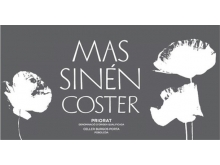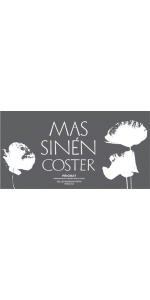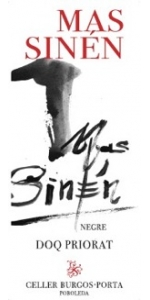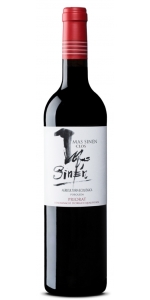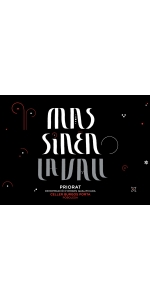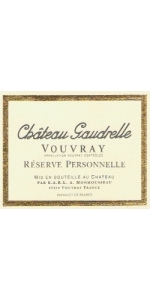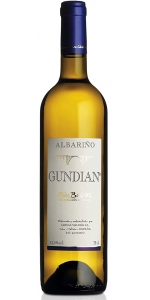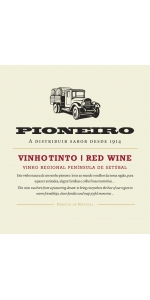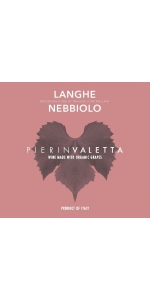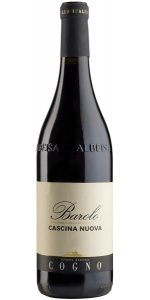Mas Sinen Coster Reserve Priorat 2016
Mas Sinen Coster Reserve Priorat is made from 50% Grenache and 50% Carignan.
he Priorat DO was created in 1954. But it is only in the 1990 that the quality of the wines were able to compete internationally. It is now a DOCa (The highest qualification level for a wine region according to Spanish wine regulations, alongside Rioja DOCa). Total acreage for the entire appellation is 4,400 acres. Intense red cherry color with garnet reflections. Black fruit, compote fruits, hints of balsamic. The mouth is ripe and intense, fresh and powerful. Strong and flavorful.
50 year old vines planted on Llicorella soil (decomposed black and reddish Slate, mixed with Mica and Quartz). Light filtration.
Mas Sinen Negre Priorat is made from 38% Garnacha, 22% Cabernet Sauvignon, 23% Carinena, 16% Syrah
Aged in 90% French, 10% American oak barrels for 12 months.
Maceration for 21 days. ML in stainless steel tanks.
Clarification with white egg and soft filtration.
The wine shows great spice and leather components, some minerality and a lot of ripe red fruits aromas as well.
This wine is certified organic.
Review:
"Dark, bright-rimmed ruby. Highly perfumed, mineral- and smoke-accented red and dark fruit preserve, baking spice and floral pastille aromas, along with hints of licorice and black tea. Gently chewy and focused on the palate, offering juicy cherry, blackberry and spicecake flavors that deepen and turn spicier as the wine opens up. Finishes impressively long and sappy, with a lingering floral nuance, well-integrated tannins and a jolt of smoky minerality. Raised in new and used barrels, 90% French and 10% American.- Josh Raynolds"
- Antonio Galloni's Vinous (March 2021), 93 pts
Mas Sinen Clos Priorat is made from 38% Garnacha, 22% Cabernet Sauvignon, 23% Carinena, 16% Syrah.
Before the 2017 vintage, this wine was called Negre. It is the same vinification and level of excellence as the prior cuvee, but with a different name.
It's quite ripe, concentrated, powerful and oaky with black rather than red fruit and peat and graphite aromas. The palate is full-bodied with plenty of rough-hewn tannins and moderate acidity, and is in need of bottle age and/or powerful food. An XXL Priorat.
Mas Sinen La Vall Priorat is made from 57% Garnacha, 24% Cabernet Sauvignon, 10% Cariñena (Carignan), 9% Syrah.
This wine has a highly intense, lively vermilion red color, complex yet direct aromas with predominant ripe black and red fruits, notes of minerals and forest herbs. Flavors are strong, full and layered with round, fresh and delicate tannins.
Pairs with meat, sausage, cheese.
All older vintage wines have been purchased from a single collectors cellar. Pictures can be requested before shipment.
Alexandre Monmousseau Gaudrelle Vouvray Reserve Personelle is made from 100 percent Chenin Blanc
Fine Chenin Blanc typicity, with aromas of ripe apples and honeyed notes. Rich, smooth, rounded palate with great structure and weight. Has the acidity to support ageing for 10 years.
Mas Sinen Coster Reserve Priorat is made from 50% Grenache and 50% Carignan.
he Priorat DO was created in 1954. But it is only in the 1990 that the quality of the wines were able to compete internationally. It is now a DOCa (The highest qualification level for a wine region according to Spanish wine regulations, alongside Rioja DOCa). Total acreage for the entire appellation is 4,400 acres. Intense red cherry color with garnet reflections. Black fruit, compote fruits, hints of balsamic. The mouth is ripe and intense, fresh and powerful. Strong and flavorful.
50 year old vines planted on Llicorella soil (decomposed black and reddish Slate, mixed with Mica and Quartz). Light filtration.
The Mas Sinen Estate
Mas Sinen is located in the village of Poboleda, in the province of Tarragona. The winery dates back to the 19th century and has been in the family for a few generations. Mas Sinen is a beautiful estate made of stone and surrounded by the family vineyards. Today, Salvador Burgos and his wife Conxita Porta, together with their two daughters, continue the family tradition using the most modern technologies to produce high quality wine from the Priorat Denomination of Origin.
The ancient Mountainous region of Priorat incorporates nine villages of wine production. They are:
- Gratallops
- Bellmunt del Priorat
- Torroja del Priorat
- Poboleda
- Porrera
- La Morera de Montsant
- Escaladei
- La Vilella Alta
- La Vilella Baixa
- El Llorar
- El Molar
The vineyards measure 1.662,55 hectares on size or 4,106.50 acres.
Priorat is about vines per hectare and not about hectares, because the yields are so low.
The name Priorat comes from the word Priory and refers to the 12th century Carthusian Priory established in the region
The old vines in the Priorat region are almost entirely Garnacha and Carignane.
Soil type: local schist called llicorella (decomposing soil type).
Prior to 1979 very few wineries were in production and the area was becoming depopulated. The interest and revolution in Priorat was created by five wineries whose names all began with the word Clos.
1. Clos Mogador - Rene Barber - the modern day pioneer of the region
2. Clos Martinet
3. Clos de L'OBAC
4. Clos Erasmus
5. Clos Dofi - famous winemaker, Rock star and self prom Alvaro Palacios
Today many new small producers with less than 3,000 cases in production are emerging from this area.
Prices for the wines are high and Priorat along with Rioja are the two regions entitled to the highest quality designation by D.O. law: Denominacion de Origen Calificada or DOQ
Today there are 73 wineries in Priorato with new ones coming all the time.
Wines are designed to age for 10-20 years. The styles vary, but Priorat reds are normally dark colored, muscular, tannic, ripe, rich in alcohol in nature Think Chateauneuf-du-Pape from Spain with a Spanish twist.
The Mas Sinen Vineyards
The vineyards measure 15 hectares total. They are planted in terraces, in the slopes of the "Mas Sinen" mountain and are situated 300-500 meters above sea level, cultivated under organic methods. The vines are 5 to 50 years old planted to local schist called llicorella (decomposing soil type) which is typical of the Priorat region.
Gundián is a local surname & the name of several Galician villages (3 in the area) as well as a famous bridge in Galicia - thus the bridge graphic on the label. The Gundián Bridge, also known as the Gundián Viaduct, is a bridge that spans the Ulla river pass, on the old railway line between Orense and Santiago de Compostela.
Clean and bright wine, straw yellow color with greenish flashes. On the nose, it has fruity and floral aromas of high intensity, especially apple and stone fruits (apricot). In the mouth, the freshness and youth of the Albariño stand out with a well balanced acidity which makes it savory, sweet and glyceric.
Pioneiro Red Wine Vinho Regional Peninsula de Setubal is made from 60% Castelao (also known as Periquita), 30% Aragones and 10% Syrah
Aged 5 months in French oak barrels
The story of this wines begun more than a century ago, with the pioneering dream of Venâncio da Costa Lima: to bring good wines to every corner of Portugal. Pioneiro wine brand was created to pay homage to his vision.
What's Unique? Pioneiro (meaning “pioneer” in Portuguese) wine vintage style label pay homage to the founder’s dream, dating back to 1914. But in a relaxed, casual way, typical of this wine producer mood.
Intense garnet color, complex nose with touches of ripe fruit, jam and spices, full-bodied flavor and a very balanced finish.
Castelao: as the most widely-grown red grape variety in Portugal it is still often referred to in Portuguese as "Periquita" or "Joao de Santarem", although that name is legally owned by José Maria da Fonseca in the Setúbal Peninsula outside of Lisbon. It is highly adaptable to different climatic conditions and its remarkable versatility enables winemakers to make a range of wines – from the easy drinking and quaffable reds and rosados to the powerful and intense reds perfectly suited to lengthy cellaring. Castelão comes into its own and is most expressive in the Sétubal Peninsula, where it makes meaty and intense wines with aromas of red berries and blue flowers that marry well with the deft use of oak.
Made from 15 year old vines planted on sandy soils.
Classic vinification at controlled temperature (25 °C) with prolonged maceration for phenolic extraction. Wine went through malolactic fermentation.
It was aged 5 months in French Oak barrels.
Wine was slightly filtered before bottling to avoid sedimentation in the bottle and to ensure stability.
Pasta, Cheese, red meat and game.
Produced with Nebbiolo grapes from one of the highest plots in the area, at over 500 meters above sea level.
This is an elegant Nebbiolo - fresh and fruity with simple tannins (thanks to the white calcareous soil) and good minerality.
No oak. Aged on the lees for 4 months in Stainless Steel Tan
Fresh, fruity, mineral.
Pierin Valetta is one of the ancestor of the Family and these wines are dedicated to him as we would like to thank him for giving us vineyards that reach up to 70 years old.
Made from 20 years old vines planted on Limestone soils.
No Oak. The wine was aged on the lees for 4 months in Stainless Steel Tanks.
Wine was slightly filtered before bottling.
Elvio Cogno Cascina Nuova Barolo 2017
Born to satisfy the curiosity of consumers keen to have a more immediate understanding of Barolo, the wine is bright garnet red in color with orange tints. Pleasing and immediate, it offers scents of flowers and light, delicate spices. The mouth is agreeably rounded, juicy and fresh, with just the right balance between pleasantness and elegance. The aftertaste is very harmonious with a mineral, aromatic finish.
Review:
Attractive dried strawberry with cherry and tar on the nose. Full-bodied with powerful tannins that are dusty and intense. Very flavorful and long. Solid as a rock. Needs at least three or four years to soften and come together.
-James Suckling 95 Points
- back
Paul Hobbs West Sonoma Coast Pinot Noir is made from 100 percent Pinot Noir.
Hailing from the newly established West Sonoma Coast AVA,.
Lovely ruby red shades catch the eye, while exotic notes of tart Morello cherry and pungent pine forest swirl with fresh raspberry. Bright, pure fruit carries through on the palate, layered with earthy hints of damp loam and rocky salinity, all backed by the elegant, fine-grained tannins and stylish grip that cool West Sonoma Coast offers at its best.
Review:
A rush of sugared beet, pomegranate, and vanilla-soaked raspberry mingles with a touch of salinity on entry, while a soil component reflects the super-cool climate of the appellation. Power and elegance coexist in this red, which finishes with graphite, peony, basil, and exotic incense.
-Tasting Panel 97 Points
Montes Alpha M 2019 is made from 80% Cabernet Sauvignon, 10% Cabernet Franc, 5% Merlot, 5% Petit Verdot.
Montes Alpha M is the result of an extremely limited production and a rigorous selection of the grapes, one by one, led by Aurelio Montes. Coming from the Colchagua Valley, it is one of the best and most awarded wines of Chile. The vineyards that give rise to Montes Alpha M are located in the Apalta zone of the Colchagua Valley. The soils are of granitic origin and are shallow in the upper, mountainous sectors. They vary in the clay content, depth, amount of organic matter, and especially the types of rocks and stones they are made up of. The soils origin can also range from fluvial to glacial, which shows the great diversity of soils in our vineyards. Some zones are influenced by the Tinguiririca River and others by mudslides and the detachment of material from high above in the mountain chain that delimits the valley.
- Extremely limited production where grapes are hand selected one by one.
- Only released if head winemaker, Aurelio Montes approves the quality.
- Originating from Colchagua Valley, one of the best and most awarded Chilean wines.
- Aged in new French oak barrels for 18 months.
- Smooth but structured on the palate, with silky tannins.
Review:
Deep nose, but really fresh at the same time. Currants, blackberries and chili-pepper chocolate with cedary and meaty undertones. This is really juicy, with a tight, tensely framed palate, underscored by lots of creamy, dusty tannins. A lengthy, refined and elegant expression of cabernet sauvignon, but a strong statement from Colchagua. Drink or hold.
-James Suckling 97 Points

